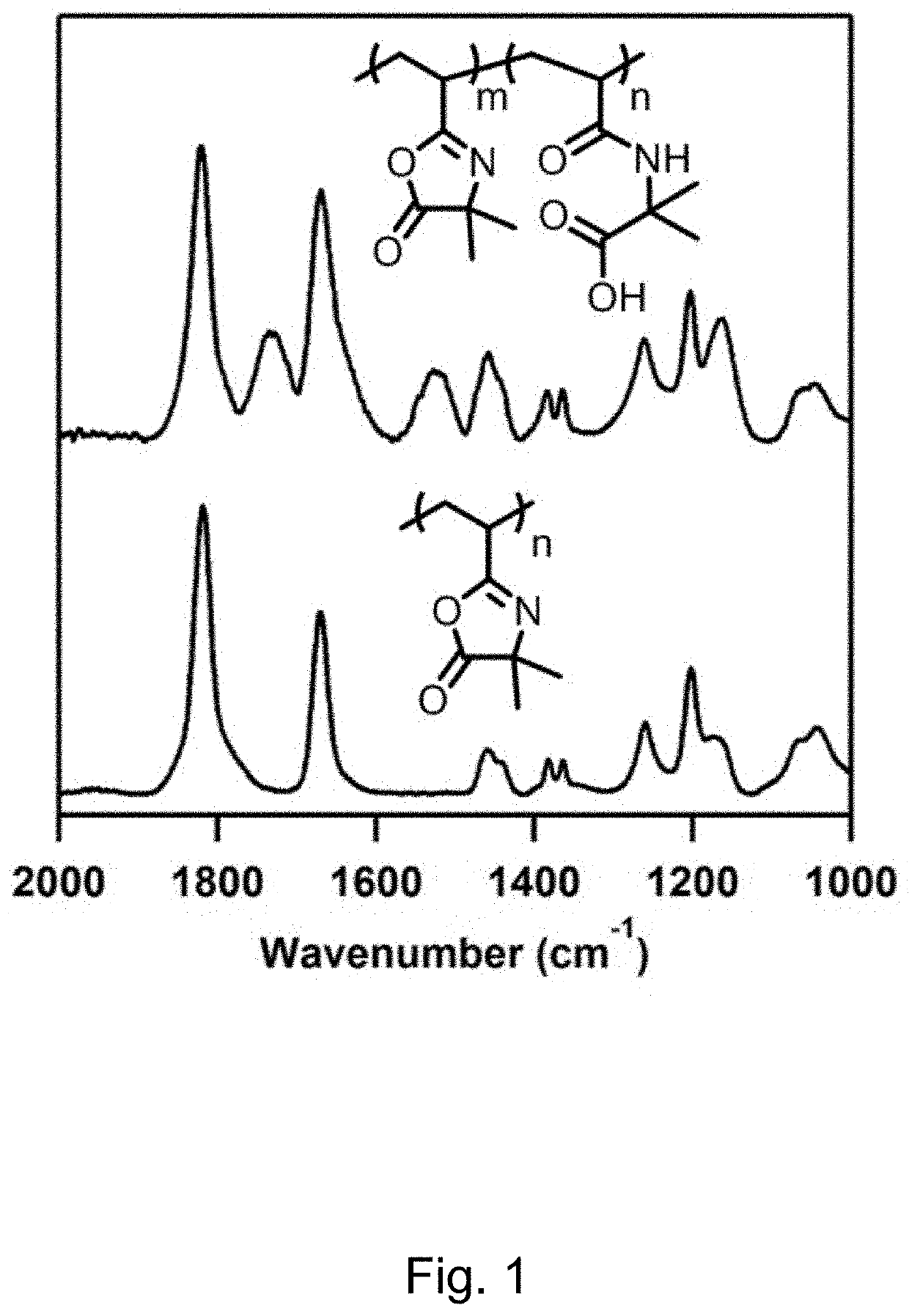Influence of Partial Side Chain Hydrolysis on the Growth and Morphology of Reactive Polymer Multilayers Fabricated Using Azlactone-Functionalized Polymers
a technology of reactive polymer and functionalized polymers, which is applied in the direction of coatings, priming paints, etc., can solve the problems of processes that lead to their development during layer-by-layer assembly, and can be used to control the extent, etc., to achieve low solubility in water, increase the ability to tune, pattern or manipulate, and the effect of increasing flexibility
- Summary
- Abstract
- Description
- Claims
- Application Information
AI Technical Summary
Benefits of technology
Problems solved by technology
Method used
Image
Examples
example 1
on of Hydrolyzed PEI / PVDMA Multilayer Films
[0091]Materials. Branched poly(ethyleneimine) (PEI; MW ˜25,000), azobisisobutyronitrile (AIBN, recrystallized once from methanol), decylamine (95%+), concentrated hydrochloric acid (HCl, 37%, ACS reagent), tetrahydrofuran (THF, HPLC grade, >99.9%), dichloromethane (DCM, ACS grade), and hexanes (technical grade), were purchased from Sigma-Aldrich (Milwaukee, Wis.). Inhibitor Removal Resin was purchased from Alfa Aesar (Radnor, Pa.). 2-Vinyl-4,4-dimethylazlactone (VDMA) was fractionally distilled under vacuum (B.P. ˜22° C. at ˜500 mTorr; clear mobile liquid at room temperature). The middle distillation fraction was collected as a clear, non-viscous, colorless oil. Butylated hydroxytoluene (BHT, 500 ppm) and triethylamine (NEt3, 1000 ppm) were added, and the monomer was stored as a crystalline solid under refrigeration prior to use. Water with a resistivity of 18.2 MΩ·cm was obtained from a Millipore filtration system. Unless otherwise noted, ...
PUM
| Property | Measurement | Unit |
|---|---|---|
| Fraction | aaaaa | aaaaa |
| Fraction | aaaaa | aaaaa |
| Fraction | aaaaa | aaaaa |
Abstract
Description
Claims
Application Information
 Login to View More
Login to View More - R&D
- Intellectual Property
- Life Sciences
- Materials
- Tech Scout
- Unparalleled Data Quality
- Higher Quality Content
- 60% Fewer Hallucinations
Browse by: Latest US Patents, China's latest patents, Technical Efficacy Thesaurus, Application Domain, Technology Topic, Popular Technical Reports.
© 2025 PatSnap. All rights reserved.Legal|Privacy policy|Modern Slavery Act Transparency Statement|Sitemap|About US| Contact US: help@patsnap.com



